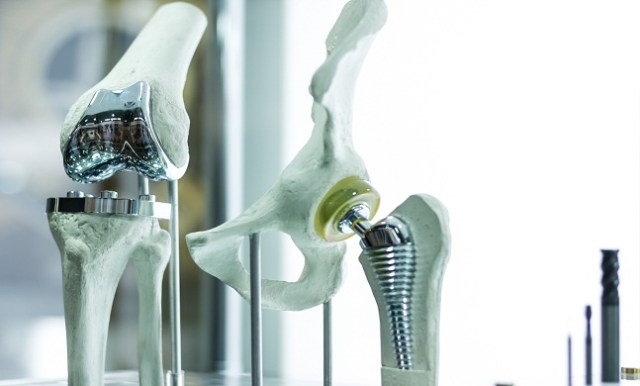Knee Joint Replacement
Overview
Due to arthritis or injury, many a time people experience intense knee pain and stiffness. This makes it difficult for the person to engage in even day-to-day activities without any difficulty. The first step to treat the problem is by using medications and non-surgical treatments, and if everything fails to work, knee replacement surgery comes into action. The main indication for knee replacement is pain, especially when this is combined with deformity and instability. Most replacements are performed for osteoarthritis of rheumatoid arthritis.
Causes of Knee pain
Following are the major causes of knee pain which may end up demanding a knee replacement surgery to fix them-
- Osteoarthritis: Osteoarthritis, also known as ‘wear and tear arthritis’ is a condition characterized by a damaged cartilage that cushions the bones. This wear and tear usually happens as people age. Due to this, the knee bones rub against each other, causing pain and stiffness.
- Rheumatoid arthritis: The most common type of inflammatory arthritis, rheumatoid arthritis is an autoimmune disease which causes inflammation of the synovial membrane. This in turn damages the cartilage and bones of the affected area, thereby causing pain and stiffness.
- Traumatic arthritis: This is caused due to a serious knee injury or fracture which may damage the cartilage resulting in knee pain.
Types of operation
- Total knee replacement (TKR): In each case during operation, all the articular surfaces are replaced-with metal on the femoral side and polyethylene on a metal tray on the tibial side. Mono-block polyethylene tibial components may also be used and typically polyethylene alone on the implants is used so as to ensure correct placement of the implants, so that the normal mechanics of the knee are reproduced as closely as possible. The tibia and patellar component are used typically with cement, whereas the femoral component may be press-fitted but is more commonly cemented. Bone defects may be filled with bone graft, metal augmentation wedges or cement. It is important to-
- overcome deformity(the knee should finally be about 7 degrees valgus)
- promote stability (by tailoring the bone cuts so that the collateral ligaments are equally tense in both flexion and extension)
- permit rotation (otherwise cemented prostheses are liable to loosen)
The development of suitable prostheses and instrumentation in recent years has led to vast improvements in technique and hence, the results are now similar to those of hip replacement.
- Partial knee replacement: In partial knee replacement the affected compartment is replaced, preserving the rest of the structures within the knee. The majority of partial knee replacements are performed for anteromedial osteoarthritis with fewer performed for lateral disease. It is essential to establish before surgery that the anterior cruciate ligament is intact and that the other compartments of the knee are functioning well. Following a successful operation, relief of pain, speed for recovery and restoration of function can be impressive. The revision rate of partial knee replacement is higher than of total knee replacement.
- Highly constrained or hinged knee replacement: Artificial knee joints with a high level of constraint or hinges (rotating or fixed) are used in complex reconstruction knee surgery; when there is marked bone loss and severe instability involving the collateral ligaments. Their main clinical application is in complex revision surgery of following tumour excision.

